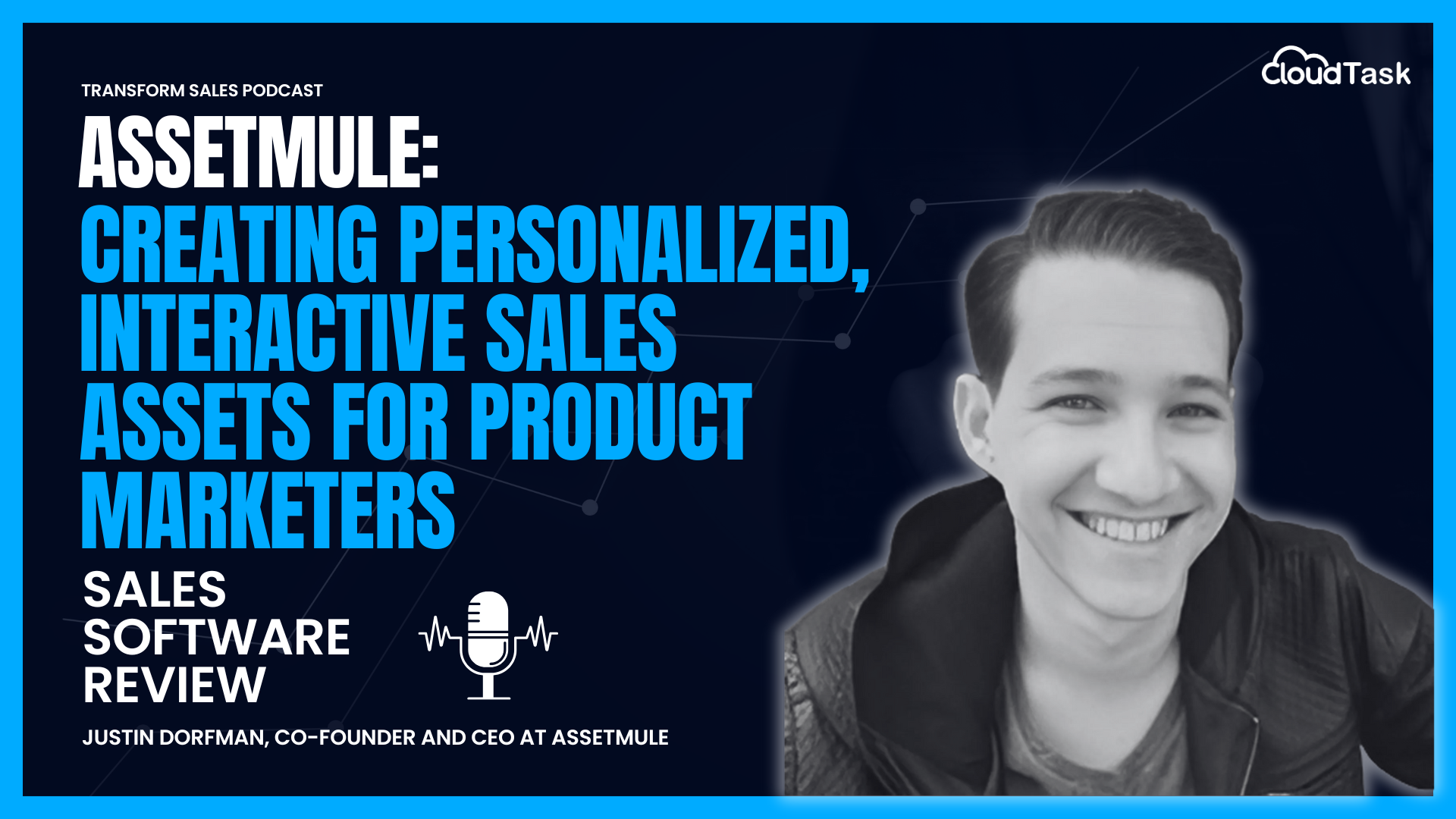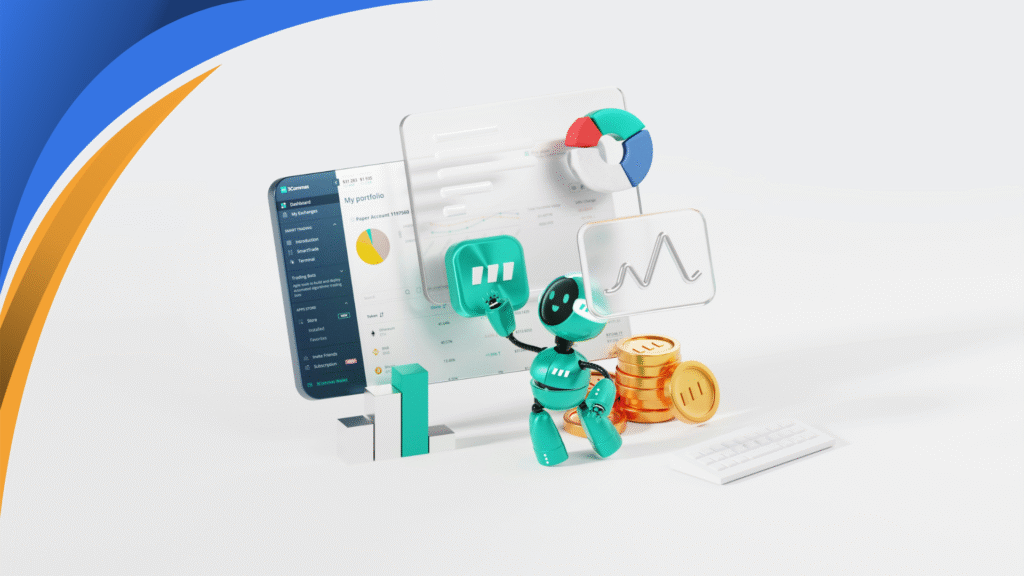AssetMule | Personalized Interactive Sales Assets for Faster Deals
Introduction
In this episode of the Transform Sales Podcast: Sales Software Review Series, David Menjura and Justin Dorfman talked about how outbound sales teams, founders, and SDRs focused on B2B social selling and demand generation can use AssetMule to boost prospect engagement and response rates.
Today, sellers and product marketers face the critical challenge of engaging buyers in a meaningful way. Static, outdated PDFs and slow asset creation processes often cause lost opportunities. AssetMule changes this by empowering teams to create personalized, trackable, and interactive sales assets without needing design support. As a result, sales teams can respond faster, deliver tailored experiences, and shorten deal cycles.
In this article, you’ll learn what alternatives sales teams used before AssetMule, the challenges they faced, how AssetMule solves these problems, what you need to set it up, and the KPIs to measure success.
When it comes to Boost prospect engagement and response rates, what alternatives were your customers most often using before buying your software?
Before adopting AssetMule, outbound sales teams and product marketers primarily relied on three alternatives:
- Freelance Designers + PDFs: Product marketers hired freelance designers to create static one-pagers, case studies, and decks. This process often took weeks and cost thousands of dollars per asset.
- Internal Design Teams: Some organizations used in-house design resources, but faced bottlenecks, long queues, and high costs for creating or updating sales content.
- DIY Tools like Canva or PowerPoint: Sales teams sometimes tried creating materials themselves with tools like Canva or PowerPoint, but the results were often off-brand, unprofessional, and hard to personalize for different prospects.
These approaches were manual, inconsistent, and created friction between marketing and sales teams.
What challenges were your customers running into that your software helped them overcome?
Customers experienced three major challenges when using these alternatives to boost prospect engagement and response rates:
- Low Usage of Sales Assets: According to a Forrester report, only 35% of sales assets ever got used. Static PDFs felt generic and irrelevant to specific buyers, leading to low adoption by sales teams.
- Outdated or Inconsistent Content: With static assets saved locally, many sellers used outdated versions, causing misalignment with current brand messaging and missed opportunities.
- Limited Engagement Tracking: PDFs provided no visibility into how prospects interacted with them. Sellers had no way to know if prospects opened, viewed, or engaged with their content.
AssetMule was built to overcome these exact problems by providing dynamic, interactive, and trackable sales assets.
What are the key features of AssetMule that help overcome the Boost prospect engagement and response rates challenges?
How AssetMule Overcomes Low Usage of Sales Assets
- Situation: Product marketers and sales teams needed sales assets that reps would actually want to use because they felt relevant and tailored to each prospect.
- Problem: Traditional PDFs were static and generic, causing reps to skip using them in their outreach.
- Solution: AssetMule enables easy personalization through dynamic templates and content snippets. Reps can quickly customize assets with prospect names, logos, industry-specific messaging, and even embed personalized videos — all without needing a designer. This ensures that every asset feels relevant to the recipient, increasing usage rates.
How AssetMule Overcomes Outdated or Inconsistent Content
- Situation: Organizations needed a reliable way to keep sales assets updated and ensure consistency across all buyer touchpoints.
- Problem: Static files often became outdated, and reps sometimes sent old versions to prospects.
- Solution: AssetMule hosts all sales assets on the web. Product marketers can update templates instantly, and any changes automatically reflect across all shared links. No more outdated decks or incorrect information reaching buyers.
How AssetMule Overcomes Limited Engagement Tracking
- Situation: Sales reps needed better visibility into which prospects were engaging with their content.
- Problem: PDFs offered no analytics or real-time engagement insights.
- Solution: Every AssetMule link comes with built-in engagement tracking. Reps get instant notifications (via email) when prospects view their assets, watch embedded videos, interact with demos, or click on links. Sellers can prioritize follow-ups based on real buying intent data, improving conversion rates.
What tasks, deliverables, and/or people need to be involved in setting up your software for this JOB TO BE DONE and how long does it typically take to reach full productivity?
Setting up AssetMule is fast and simple:
- Who Needs to Be Involved: Typically, a Product Marketer sets up AssetMule by creating initial templates and snippets. Later, sales reps personalize and send assets. In founder-led companies, founders can do both roles initially.
- Key Tasks:
- Set brand themes (colors, fonts) using your company’s website URL.
- Create first templates using the library of pre-designed interactive sales content.
- Upload or create snippets (logos, messaging, interactive demos, calendars).
- Invite sales team members.
- Setup Time:
- Creating the first template can take as little as 5 minutes.
- Full initial onboarding to equip a sales team can be completed in under 60 minutes.
- Integration Options:
- Embed interactive product demos (Storylane, Navattic, Reprise, etc.).
- Embed meeting booking links (Calendly, Chili Piper, etc.).
- Slack integration for real-time notifications (coming soon).
- Scalability:
- Easy to add new templates, update existing ones, and manage libraries as the business grows.
- Typical 12-Month SaaS Cost:
- Starter Plan: Free
- Paid Plans: Starting at $49/month
- Enterprise Plans: Custom pricing based on usage volume.
There are no hidden fees; AssetMule operates on a straightforward, transparent subscription model.
What KPI’s should Outbound sales teams, founders, and SDRs focused on B2B social selling and demand generation use to evaluate their success with AssetMule, and what quantifiable outcomes can they expect?
To evaluate AssetMule’s success, customers should focus on these KPIs:
- Sales Asset Usage:
- Track how many sales reps are consistently using the personalized templates.
- AssetMule customers report a 10x increase in sales asset usage after implementation.
- Buyer Engagement:
- Monitor open rates, click rates, video plays, and demo interactions.
- Users experience up to a 5x increase in prospect engagement compared to static PDFs.
- Sales Cycle Length:
- Measure average days from first touch to deal closed.
- AssetMule users have reported reducing sales cycles by up to 3x (e.g., from 90 days to 30 days).
- Pipeline Velocity:
- Track the number of opportunities advancing to later stages faster thanks to buyer education and intent data captured via AssetMule.
- Lead Conversion Rates:
- Compare conversion rates before and after using AssetMule to measure ROI.
By focusing on these KPIs, companies can quantify the boost in efficiency, engagement, and revenue impact AssetMule brings.
Conclusion
In a world where buyers expect personalized, digital-first experiences, static PDFs are no longer enough. AssetMule empowers outbound sales teams, founders, and SDRs focused on B2B social selling and demand generation to create personalized, interactive sales content without needing designers.
By using dynamic sales templates, real-time engagement tracking, and fast asset creation tools, teams can boost prospect engagement, reduce sales cycles, and close deals faster. AssetMule’s intuitive setup, rich snippet libraries, and instant updates make it a must-have for modern revenue teams.











